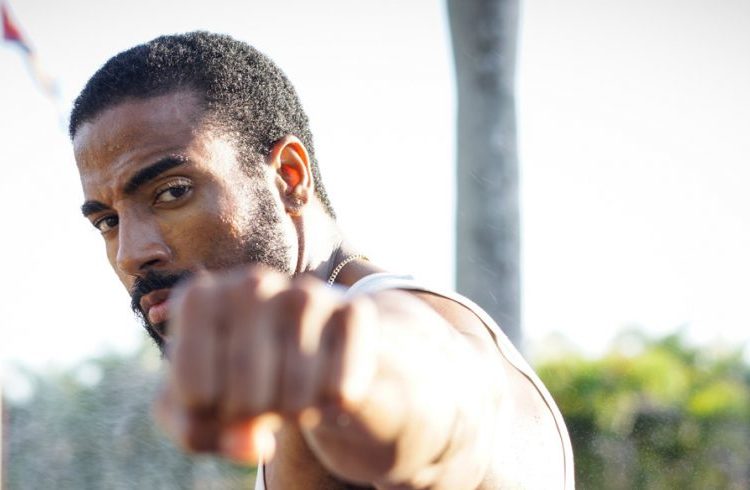Cuba-U.S. relations have a real anchorage in cinema. This is because perhaps the seventh art is, today, the most diverse, complex and multicultural expression of the island or because, in spite of everything, films continue to be made and a cinema that is, in the midst of all types of difficulties, honest and with a high aesthetic quality, and because perhaps, also, there’s a history that endorses and sustains one of the most important cinematographies of Latin America.
In that interest, and from that perspective, there is Bach Media, a production company founded by Jesús Hernández, a graduate from the Faculty of Audiovisual Means of the University of the Arts of Cuba, currently established in New York. A very important exchange, which is already showing results, is being promoted with Bach Media, and it will have a fundamental point of visibility in the Hispanic Film Festival of Stony Brook University. The contemporary Cuban films that will be at the center of the contest are: El acompañante, by Pavel Giroud; La pared de las palabras, by Fernando Pérez; Conducta, by Ernesto Daranas, and Esteban, by Jonal Cosculluela. They all show dissimilar faces of the island and the event confirms the possibility of the dialogue and the debate being held about Cuba based on multiple problems. “Stony Brook is a demonstration of the real interest there is about Cuba, and of a serious work to understand the country through its cinema,” Jesús Hernández insists in an interview given to OnCuba.
How is Bach Media inserted in the cinematographic world of NY, specifically the Hispanic?
Bach Media has a year of being legally founded in the city of New York, something that in Cuba until now is a dream. We have been able to work with institutions in Miami as well as in New York. Our first event was in Miami’s Spanish Cultural Center in 2014, and thanks to that link we were able to take to Miami films that don’t get to the Miami International Film Festival or other spaces in the city. Starting then, when we anchored in the city of New York, we established an alliance with the CUNY Graduate Center and we organized an event here. We have projects underway in other cities and with several institutions in the entire United States, but our center is New York. The interest that Cuba awakens in all of the United States and particularly in New York City is no secret, but there’s also a lack of knowledge, many people from here and from over there doing what they want or can do to satisfy a request or their own interests, because the demand is real. It’s good that Cuban cinema is increasingly attracting more attention, beyond the films made in the 1960s or by better known directors. Inserting and promoting Cuban cinema in the U.S. circuits is a very important part of our work.
The feature lengths chosen have different aesthetics and also diverse production models. Why is this selection the one that initiates the relationship between the University Festival and the island’s cinema?
The Cuban films chosen for this edition of the Stony Brook Hispanic Festival stem from the premise that they are fiction films that deal with the subject of health and education in Cuba. Despite that each one has a different approach to the subjects and belong to diverse generations of Cuban filmmakers, they have used independent production mechanisms. In the case of La pared de las palabras, it was Fernando Pérez’ first independent film after having worked during his entire career with the Cuban Institute of Cinema Arts and Industry (ICAIC), one of the few legal production bodies in Cuba and the country’s biggest film producer. La pared de las palabras responds to its director’s need to work with a team of young filmmakers using a completely independent production and different from his work until then. Fernando is an incredible human being, and in addition to being an enthusiastic and very talented director, he is a revolutionary in the broadest sense of the word, a person who renews himself and “charges his batteries” with each one of his projects, and this is what is felt in that film. I don’t believe Fernando will stop making independent films and I infinitely thank him for having made me a part of his working team.

As a producer and cultural promoter, what do you think of cinematographic production in Cuba?
A time of changes from within is being lived in Cuba, one can notice it when one arrives after some months, but the landscape with the Cubans who are not permanently living in the country is also changing. It is the moment for Cuban cinema to transcend the ghettos, the stereotypes, everybody’s narrow mindedness.
Film production in Cuba has grown a lot and has diversified. A greater number of independent films are currently being made than those produced by ICAIC, and that is public knowledge. The question is not to produce more but rather to do it the right way. Some Cuban fiction films have better luck and achieve a greater distribution, almost always because they are able to connect with a public avid to know what is happening in Cuba and the work of the filmmakers and sales agents who position the films in certain circuits, but the issue of the reach of Cuban cinema is a constraint. If there are so many problems and such a poor cinema is made, the result will have an impact on the film’s transcendence. There is Cuban cinema that is made outside of Cuba, or by the filmmakers who go to the island and achieve a greater impact and resonance, and this is because they have the tools that unfortunately many Cubans don’t know about, or that seem unreachable or unnecessary to them.
That’s why Bach Media was born with the idea of making visible cinema made by Cubans in and outside Cuba, as well as strengthening Cuban cinematographic production at a level not frequently seen until now. We have been able to collaborate with the Havana Film Festival New York for the second consecutive year and we are establishing alliances with institutions beyond the Latino framework. Unfortunately, “the Latino,” even in such a wonderful city as New York, reproduces cultural stereotypes of this country. Cinema does not escape from that, in addition to the very strong prejudice that still exists with Latino cinema. Each day more Latino and European cinema gets to U.S. movie theaters, and the major producers and festivals, just like the media, are paying more attention to them. We are working so that Cuban cinema recovers the role it had in Latin American cinematography, and that is a slow job, it takes up a lot of time, but it has to start by making increasingly better films, which connect with the Cubans in all places and with a much greater public.
How are you projecting, in the long term, this dialogue between Cuban cinema and its insertion in the New York space?
Cuban cinema is made in Cuba and the one made outside the country also has a very interesting positioning space in the city. It’s very curious to see in NY, after almost two years, the similarities that culturally exist between the Big Apple and Havana, in particular. We are preparing two events for the next few months and each day there are more companies that want to start collaborating with us inside and outside Cuba. Cinema is not made just by the filmmakers, and while a film is a team work, it is not finished even when the filming is finished. Many factors come into play which we are, for the first time and from New York, bringing to the dialogue. This year is also very important for the feature length projects we have under way.

One of this project’s aims is to read Cuba through its cinema. How is and will the island be received by the Latino audiences and others living in NY?
Reading and understanding Cuba is one of those aims. Cuba has been a constant point of interest for certain New Yorkers for a long time. If you analyze those who have been working the longest with the island, you become aware that many institutions and persons are, to a great extent, from New York. For two years that desire has been growing more openly with the resumption of the talks between the two countries. New York is like a big bubble in that country where the whole world is present. Cuba is increasingly more a visible part of the world for the persons living in the United States interested in rediscovering the Cuban cultural wealth. There is genuine curiosity with respect to Cuba, there is an idealized fascination with respect to the island, but there is a lot of interest from all types of sectors. Cuba is not rigid or monolithic, it has many islands within it and our diversity is of an incomparable value. From here there are those who have been working with Cuba for years, starting a short time ago, or have even already established themselves on the island to work from there. Every day there are more of us and Bach Media is part of that work. The truth is that one has to be consistent with what one does, in Cuba and outside of it. That has been a maxim of my work for some years. What’s most important is to work.










